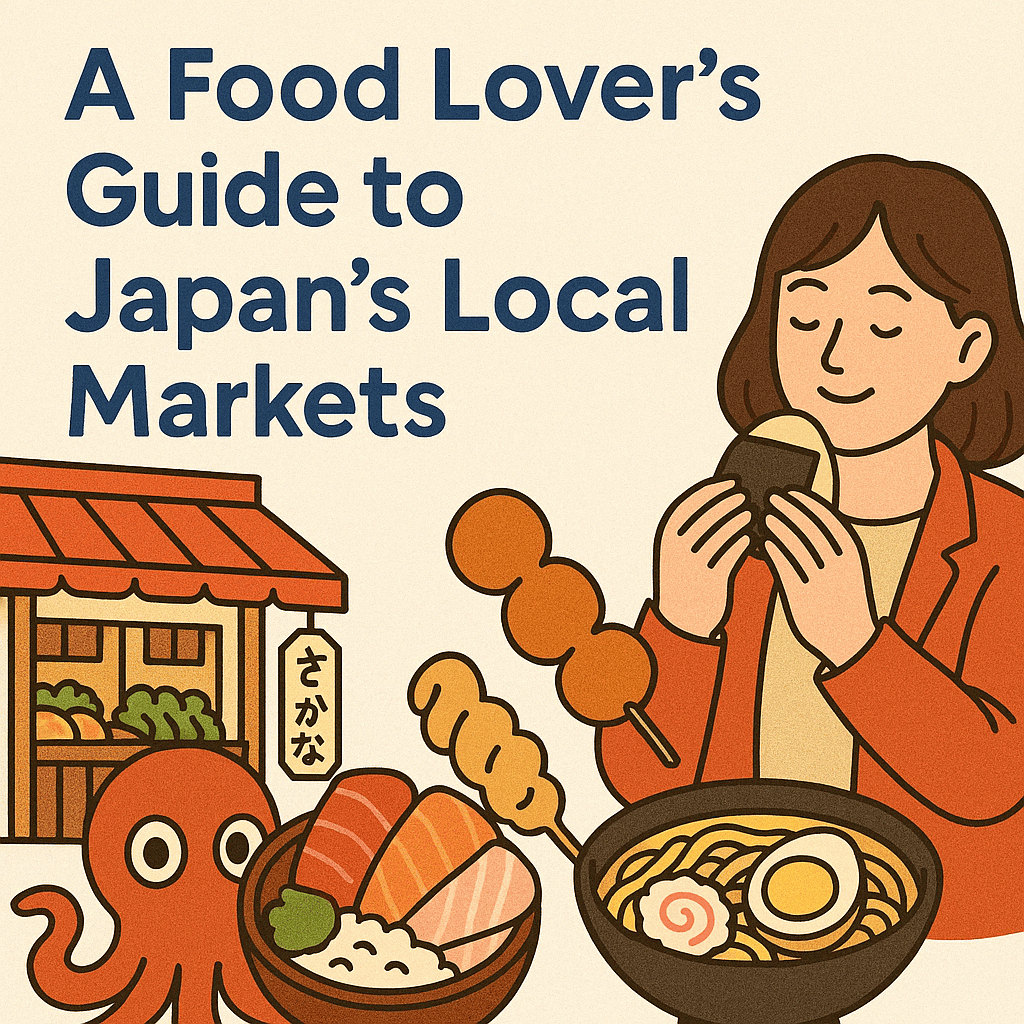
Beyond the glossy department store food halls and tourist-filled streets lies the beating heart of Japanese cuisine: neighborhood markets where locals have shopped for generations.
Japanese markets aren't just places to buy ingredients—they're cultural institutions. Each stall represents a family business often passed down through generations, with vendors who have spent decades perfecting their craft. Whether it's the knife sharpener who learned his trade from his grandfather or the pickle vendor whose secret recipe dates back to the Meiji era, these markets preserve culinary traditions that might otherwise be lost.
Unlike sterile supermarkets, local markets engage all your senses. The calls of vendors announcing the day's specials, the sizzle of freshly grilled seafood, the rainbow of seasonal produce, and the tantalizing aromas that pull you from stall to stall create an immersive experience no restaurant can match.
While the inner wholesale market moved to Toyosu, the outer market surrounding the original Tsukiji site remains a food lover's paradise. Over 400 shops and restaurants line the narrow alleyways, selling everything from professional-grade Japanese knives to fresh wasabi root.
Must-try experiences:
Best time to visit: Early morning (6-8am) for the freshest selection and fewer crowds.
Known as "Kyoto's Kitchen," this 400-year-old covered market stretches for five blocks in central Kyoto. With over 100 stalls specializing in Kyoto's distinctive cuisine, it's the perfect place to discover local specialties you won't find elsewhere.
Must-try experiences:
Best time to visit: Weekday afternoons to avoid crowds and catch vendors in a chatty mood.
Living up to Osaka's reputation as "Japan's kitchen," Kuromon Market has been feeding locals for nearly 200 years. With Osaka's food-obsessed culture, this market specializes in ready-to-eat street food as much as fresh ingredients.
Must-try experiences:
Best time to visit: Lunchtime, when the market is in full swing and all food stalls are operating.
Dating back to the Edo period, this seafood-focused market on the Sea of Japan coast offers some of the country's freshest marine delicacies. The 170+ stalls showcase Kanazawa's reputation for exceptional seafood.
Must-try experiences:
Best time to visit: Winter for the incredible crab season.
For a completely different Japanese culinary experience, Okinawa's largest market showcases the unique food culture of Japan's tropical southern islands. Chinese, Southeast Asian, and Pacific influences create a distinct food identity.
Must-try experiences:
Best time to visit: Mid-morning when all stalls are open but before the lunch rush.
In Japan's northernmost island, this market specializes in the incredible seafood Hokkaido is famous for. With over 250 stalls, it's particularly known for crab, sea urchin, and squid fishing activities.
Must-try experiences:
Best time to visit: Early morning (5-7am) for the most authentic experience.
One of Japan's oldest continuously running markets, the 1000-year-old Wajima Market offers a glimpse into rural Japanese food culture. While smaller than urban markets, it showcases homemade and foraged items often missing from city marketplaces.
Must-try experiences:
Best time to visit: Early morning when local farmers and fishermen first arrive with their goods.
Shopping at Japanese markets requires a slightly different approach than you might be used to:
When you step into a Japanese local market, you're not just shopping—you're participating in centuries of food tradition. Each purchase supports small family businesses and helps preserve Japan's remarkable food heritage. So skip the convenience store bento box for a day and dive into the vibrant world of Japan's local markets for an authentic taste of Japanese culinary culture.